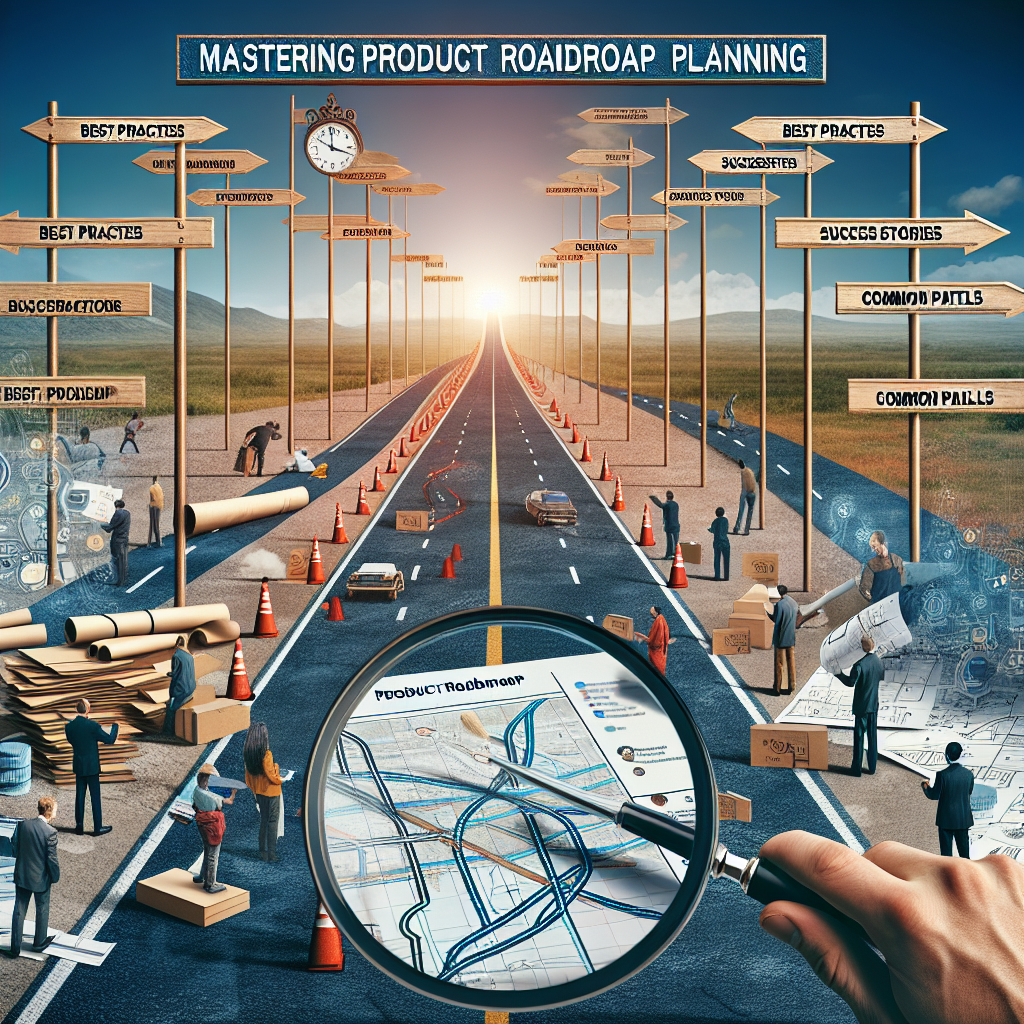Mastering Product Roadmap Planning: Best Practices, Success Stories, and Common Pitfalls

In the realm of product management, roadmap planning plays a crucial role in ensuring that a product evolves successfully to meet ever-changing market demands and user needs. A well-crafted product roadmap can act as a strategic guide, aligning the entire team towards a common set of goals. However, creating and maintaining an effective roadmap can be fraught with challenges. In this blog post, we will explore the essentials of product roadmap planning, discuss best practices, share success stories, and pinpoint common mistakes to avoid.
The Importance of a Product Roadmap
A product roadmap is a high-level visual summary that maps out the vision and direction of your product offering over time. It communicates the why and what behind what you are building. Here’s why a product roadmap is vital:
- Aligns the Team: A roadmap ensures that everyone in the organization is on the same page, working towards the same goals.
- Prioritizes Features: It helps product managers prioritize features and initiatives, ensuring that the most critical tasks are addressed first.
- Facilitates Communication: It informs stakeholders about the current status and future direction of the product, enhancing transparency and trust.
- Guides Development: It serves as a blueprint for the development team, offering clear direction for building the product.
Steps to Create an Effective Product Roadmap
1. Define Your Vision and Strategy
Start by clearly defining the product vision. What are you aiming to achieve in the long run? Align this vision with your product strategy, which includes market analysis, competitive landscape, and target audience.
2. Gather Inputs from Stakeholders
Include insights and feedback from various stakeholders such as customers, sales teams, marketing, and development. This ensures that the roadmap addresses the needs and expectations of different parties.
3. Prioritize Features and Initiatives
Use prioritization techniques like MoSCoW (Must have, Should have, Could have, Won’t have), RICE (Reach, Impact, Confidence, Effort), or Kano Model to decide which features and initiatives should be prioritized.
4. Create a Timeline
Once you have prioritized the key features, map them out on a timeline. Decide the time frame for your roadmap (e.g., quarterly, bi-annually) and ensure that it is realistic and achievable.
5. Communicate and Share the Roadmap
Once the roadmap is created, share it with all stakeholders. Use visual tools like Gantt charts, Kanban boards, or dedicated roadmap software to make the roadmap easily understandable and accessible.
6. Review and Iterate
A roadmap is not a static document. Regularly review and update it based on new data, feedback, and market conditions. Flexibility and adaptability are key to maintaining an effective roadmap.
Success Stories: Effective Roadmap Planning
Example: Spotify - Spotify's product team uses a strategic roadmap to align its diverse set of features, including music streaming, podcasting, and social features. This approach has helped Spotify remain a leader in the audio streaming industry by continuously evolving its product offering in line with user needs.
Example: Trello - Trello employs a transparent roadmap that is publicly accessible, allowing users to see what is being worked on and what is coming next. This openness has fostered a strong community of users who feel engaged and heard.
Common Mistakes to Avoid
1. Lack of Clear Vision
Without a clear product vision, your roadmap can become a scattered list of features with no coherent direction. Always establish a strong vision before building your roadmap.
2. Ignoring Stakeholder Input
Failing to consider feedback from stakeholders can lead to a roadmap that doesn’t align with user needs or business goals. Engage with stakeholders throughout the planning process.
3. Overloading the Roadmap
Piling too many features into the roadmap can lead to unrealistic goals and burnout. Prioritize effectively and focus on what truly adds value to your users.
4. Inflexibility
A rigid roadmap that doesn’t adapt to changing circumstances is bound to fail. Regularly review and update your roadmap to reflect new insights and market trends.
Conclusion
Product roadmap planning is an essential practice for any product manager. It aligns the team, prioritizes features, facilitates communication, and guides development efforts. By following the steps outlined in this post and learning from successful examples, you can create an effective roadmap that drives product success. Avoid common pitfalls to ensure that your roadmap remains a valuable tool in navigating the journey of product development.
Have you had success with your product roadmap planning? Share your experiences and tips in the comments below!



